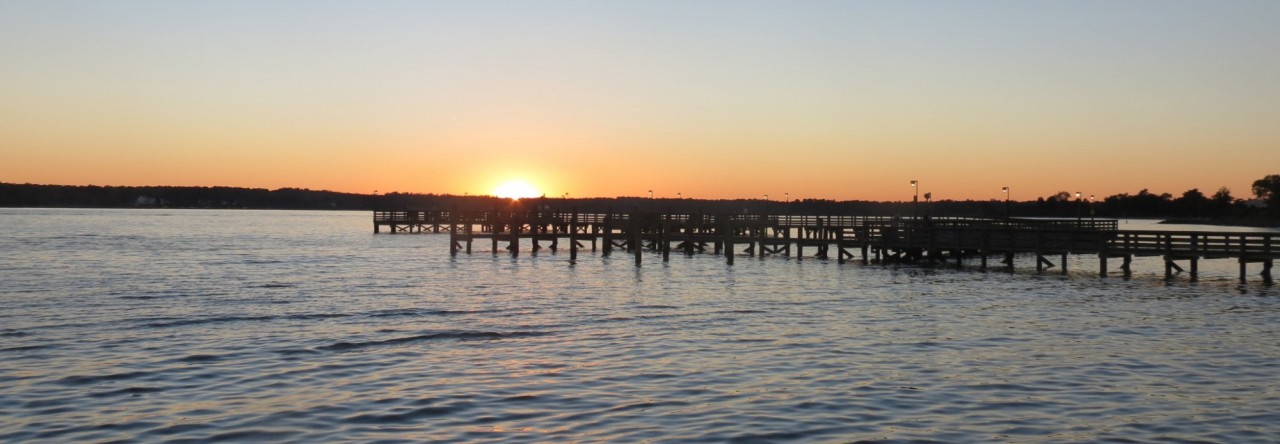Activism to stop LNG projects
The activism occurring in Lusby, Maryland against the Dominion LNG export facility is one of the most prominent case studies exemplifying resistance against fossil-fuel infrastructure on the East Coast. We Are Cove Point is the organization that has spurred many community members into direct-action and legislative tactics against the LNG site proposed in Lusby, and where construction is already underway.
According to the We Are Cove Point website, the coalition and their allies have been working since 2013 to determine the environmental impacts on their community as a result of the construction and operation of Dominion’s LNG export facility. The website claims that no environmental impact statement (EIS) was completed for the project, nor was the community consulted before FERC approved the export site. We Are Cove Point has practiced non-violent direct action tactics, including disrupting FERC public meetings, banner dropping a nationally-televised football game, and intervening in the construction process itself.
What Makes “We Are Cove Point” A Social Movement?

Our film crew interviews Heather, who is an activist who was arrested in one of the actions against the Cove Point LNG export project.
According to Doug Adams and Hilary Schaffer Boudet (2014) in their book Putting Social Movements In Their Place, the most frequent response from communities regarding energy projects is non-mobilization, or a lack of action, against projects being constructed. So what makes the movement at Cove Point important in terms of its community-driven activism that actually confronts energy giants like Dominion?
An important starting point in understanding why people mobilize is the idea that LNG export sites pose a “threat” to the community, whether to health, public safety, the environment, or all of the above (Boudet & Bell, 2014). People living around Lusby, MA who have received notice about the risks of living near the export site have a higher tendency to be involved in the tactics against the project. The risks are outlined by the We Are Cove Point Fact Sheet On Impacts to Southern Maryland
How is participation in social movement such as We Are Cove Point effective in challenging the federal energy regulatory process?
Cove Point is only one case study of resistance to LNG export projects in the country. Organizations in opposition to energy projects have also occurred along the Gulf Coast and in California (Boudet, 2011). The idea of scale shift within social movements is one of the main factors contributing to effective resistance.
Scale shift refers to when an issue is expanded through connecting more roles and actors in a movement and incorporating more claims and identities to create a larger, more diverse following against projects (Boudet, 2011). An example of this would be between fishing organizations and environmental coalitions, who both have interest in stopping LNG projects, but may not be directly linked. Thus, shifting from the purely local to the regional scale will ultimately make efforts to stop the LNG project more effective according the studies by Boudet and McAdam. Momentum gained through multi-coalition movements that engage many facets of the community are the activists best shot at stopping movement on the project.
Our conversation with McKenzie, who is an activist from Beyond Extreme Energy, explains why activists in Cove Point have a special focus on FERC. Even coalitions outside Maryland are banding together to affect how energy infrastructure projects are being fought.
When our class traveled to Cove Point, we witnessed a mixed bag of opinions about the project from community members. It was clear that many were against the project, but as we marched in the Community Day Parade, we realized that some individuals felt differently. These differing opinions arose from the uncertainty around the project and its consequences. Factors having to do with the context of Cove Point as a site that is already used to importing liquid natural gas, also have affect on whether the community as a whole is willing to mobilize (Boudet & Wright, 2012).
In any case, the context of the Cove Point and the risk versus perceived benefits of the project will impact what proportion of the community mobilizes. Also, the multi-coalition effort of those who rally around stopping the project and the efficacy of their efforts will ultimately decide the fate of the export project — and whether it is shut down or completed.
References
Wright, Rachel A., and Hilary Schaffer Boudet. “To Act or Not to Act: Context, Capability, and Community Response to Environmental Risk.” American Journal of Sociology (2012): 728-77. Web.
McAdam, D., & Boudet, H. S. (2014). Putting Social Movements in their Place. Cambridge University Press.
Boudet, H. S. (2011). From NIMBY to NIABY: Regional mobilization against liquefied natural gas in the United States. Environmental Politics, 20(6), 786-806.


